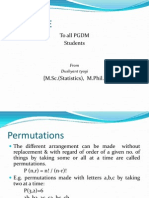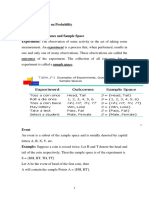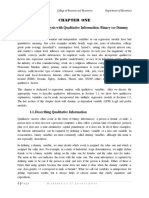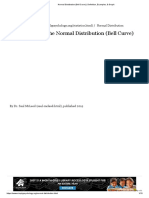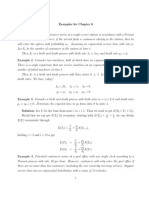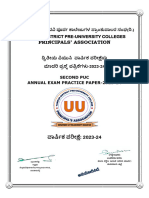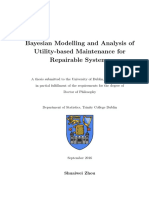0% found this document useful (0 votes)
8 views32 pagesBasics of Probability
The document provides an overview of basic concepts in probability, including experiments, outcomes, sample spaces, events, and the classical definition of probability. It discusses conditional probability, independence of events, and key theorems such as Bayes' Theorem and the Theorem of Total Probability. Additionally, it covers discrete probability distributions, expectation, and variance, along with examples and problems to illustrate these concepts.
Uploaded by
Joy SenguptaCopyright
© © All Rights Reserved
We take content rights seriously. If you suspect this is your content, claim it here.
Available Formats
Download as PDF, TXT or read online on Scribd
0% found this document useful (0 votes)
8 views32 pagesBasics of Probability
The document provides an overview of basic concepts in probability, including experiments, outcomes, sample spaces, events, and the classical definition of probability. It discusses conditional probability, independence of events, and key theorems such as Bayes' Theorem and the Theorem of Total Probability. Additionally, it covers discrete probability distributions, expectation, and variance, along with examples and problems to illustrate these concepts.
Uploaded by
Joy SenguptaCopyright
© © All Rights Reserved
We take content rights seriously. If you suspect this is your content, claim it here.
Available Formats
Download as PDF, TXT or read online on Scribd
/ 32




























